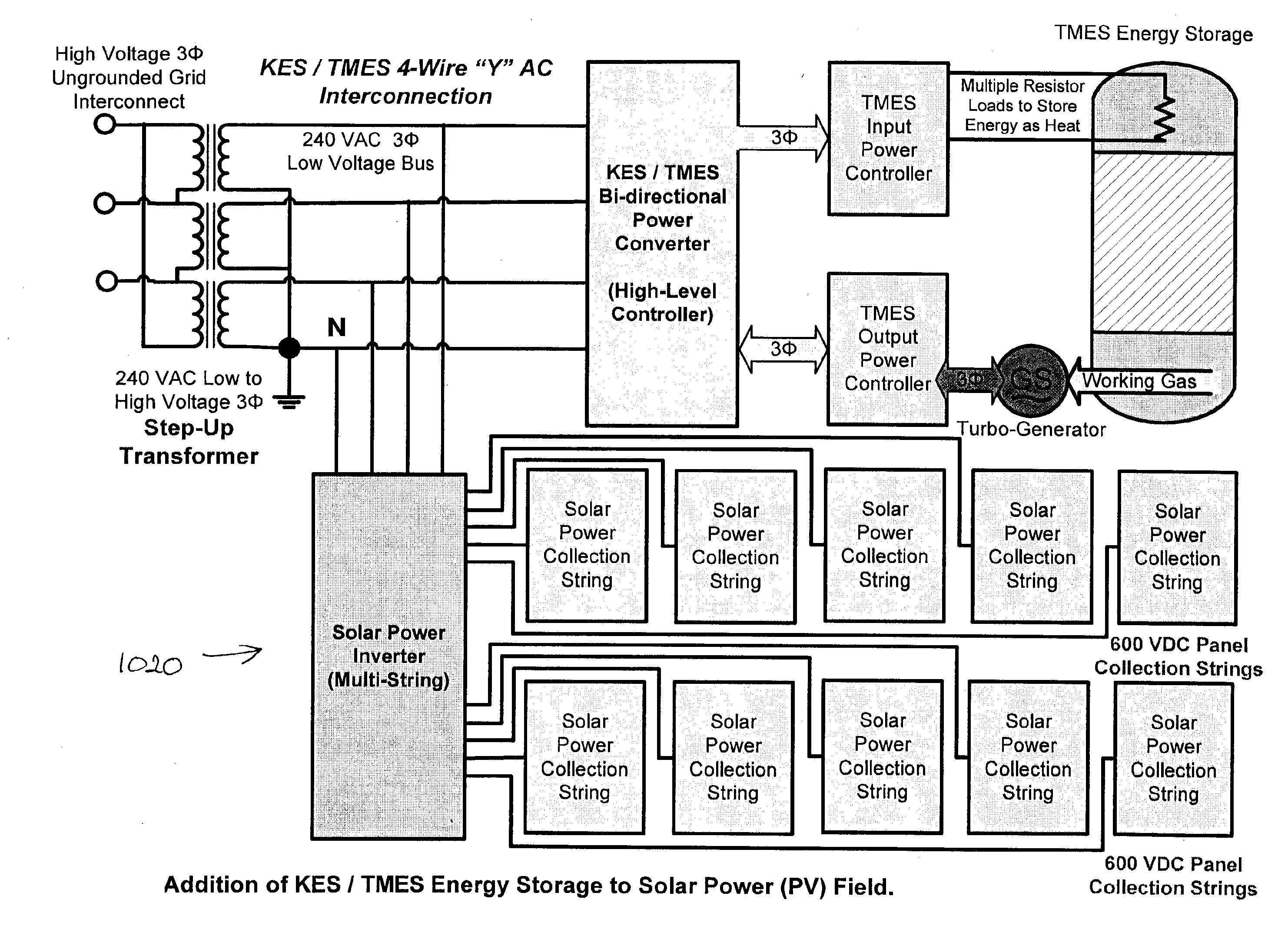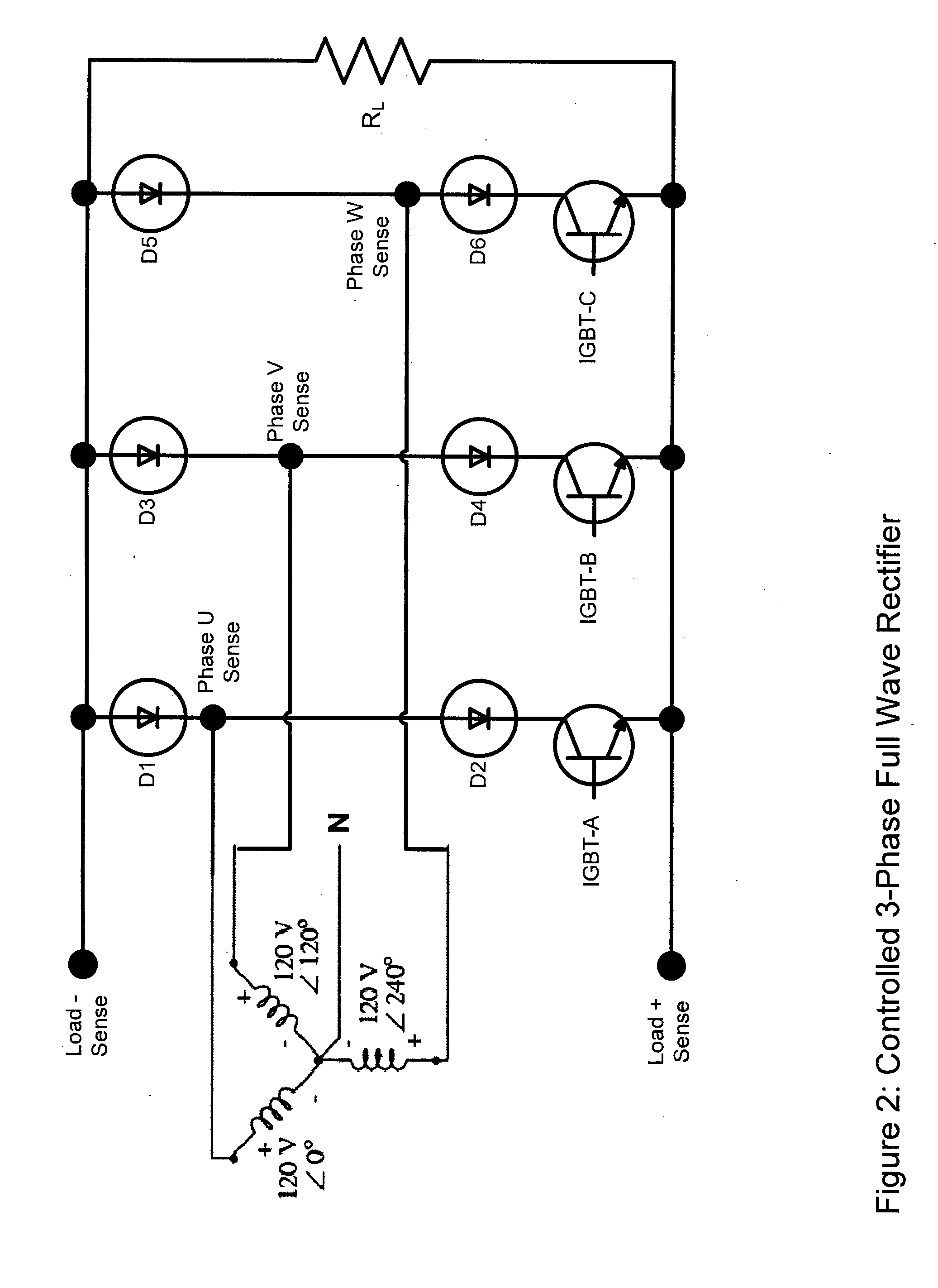High efficiency control system for the conversion of electrical energy to thermal energy
a control system and high efficiency technology, applied in the direction of electrical equipment, climate sustainability, railway braking systems, etc., can solve the problems of significant voltage transient spikes, general unsuitability of mechanically switched unit resistor load stepping, and generate a rapid change in the temperature of the heater or the heater. to achieve the effect of reducing the switching transien
- Summary
- Abstract
- Description
- Claims
- Application Information
AI Technical Summary
Benefits of technology
Problems solved by technology
Method used
Image
Examples
Embodiment Construction
[0044]In some example applications in which implementations of the current subject matter can provide benefits, a high power AC source can be the distribution level (currently defined as 70,000 Volts or less) of electrical transmission utility, or an independent generating station, micro-grid, or other managed electrical power distribution network. The thermal energy may then be utilized as part of energy storage, manufacturing processes, or other useful purposes in which precision control of at least one of heat flow and temperature is desired. The amount of energy converted can be varied in scalable steps for the precision desired from zero to one hundred percent of the attached load, and can be capable of delivering different amounts of power to different segments of a load or separate loads, depending on the number of resistive load elements and their distribution amongst multiple load controller modules connected to one or more master load management controllers.
[0045]FIG. 1 is...
PUM
 Login to View More
Login to View More Abstract
Description
Claims
Application Information
 Login to View More
Login to View More - R&D
- Intellectual Property
- Life Sciences
- Materials
- Tech Scout
- Unparalleled Data Quality
- Higher Quality Content
- 60% Fewer Hallucinations
Browse by: Latest US Patents, China's latest patents, Technical Efficacy Thesaurus, Application Domain, Technology Topic, Popular Technical Reports.
© 2025 PatSnap. All rights reserved.Legal|Privacy policy|Modern Slavery Act Transparency Statement|Sitemap|About US| Contact US: help@patsnap.com



